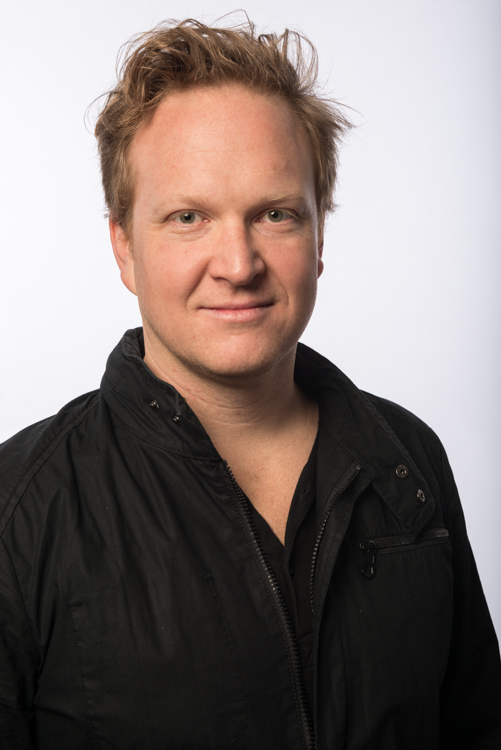Navigating the Intersection of Technology and Human Experience with Starcom Worldwide’s Bohb Blair

Bohb Blair, Starcom Worldwide’s Global Chief Experience Officer, is far less interested in where technology is heading than where consumers are heading. That’s why he gets so fired up about desire lines – a term used by urban planners to denote the natural paths people take on their own rather than the prescribed routes.
Granted, Blair is passionate about technology too. In the third year of the WARC Media Awards -- a global awards program celebrating product excellence, innovation, and creativity – Blair was named to the “Effective Use of Tech” jury. He sat down with MediaVillage to discuss what technologies and trends are inspiring him, and how marketers can leverage desire lines to create meaningful human experiences.
David Berkowitz: Tell me what you do as Starcom Worldwide’s Global Chief Experience Officer – “CXO.”
Bohb Blair: Chief Experience Officer isn't a role that you find in a lot of agencies, which is surprising to me. Starcom is in the marketing and communications space, as the Human Experience Company experiences are our product. It's also the experience of working with us as a client or to work here as an employee. In my role, I’m free to really envision what “great” looks like in the space of experiences and to provoke new thinking. What is an appropriate plan for innovation? Are we creating an atmosphere where we can co-create with clients and partners? These are the types of questions I’m contemplating for our clients every day.
Berkowitz: When you think about the intersection of technology and human experience, where are brands getting this right and where aren’t they?
Blair: Well, the big sweeping statement is if you're using technology “just because,” then you're probably doing it wrong. If you're using it in an organic way to extend your brand’s customer experience, then you're probably doing it right.
Berkowitz: What are the qualities you look at when you evaluate “Effective Use of Tech” entries?
Blair: A lot of it is in the word “effective.” If you're using technology in a way that's not relevant or you're pushing a bleeding edge technology that hasn't been adopted yet, it’s highly likely that it won't be effective. The other part I'm looking for is tech that is very organic to what that brand is trying to do. With the entries I've already reviewed so far as a judge, my favorites are using technologies that have been available for a while where someone was incredibly creative in how that technology was applied. That gets me much more excited than somebody grabbing a headline from Mobile World Congress and using it on their plan the next week.
Berkowitz: What’s an example of an effective use of technology that your team worked on?
Blair: A program that we did for a client where we used kinetic mobile archetypes, which is a really new approach to mobile targeting. It's about using the kinetic behavior of your phone to make targetable segments of people. You can hypothesize about what they're doing because of the kinetic behavior of their phone. An easy example of this would be if your phone is moving at 50 miles per hour, but you're actively touching the screen, you're probably the passenger in a car. If your phone is moving at 1.5 miles per hour in a very small environment, you're probably at a car wash. We’ve mapped archetypes for very sophisticated kinetic archetypes for common activities that you might be doing, from walking, exercising, to kneeling down in a grocery store, so you have a high degree of likelihood of knowing exactly what someone is doing, because you have location mixed with kinetic signals from their phone. Your content should be different for someone who is bored and standing in line vs someone who’s just finished a set of pushups.
Berkowitz: How do desire lines fit in with this?
Blair: I just love the concept of desire lines. The strict definition of a desire line is the path people take despite the path planned for them. That is amazing, and inspiring when you apply it as a metaphor for how people navigate a category despite the way the brand wishes they would. If people have started to find a more attractive path through the category, and that's not where you are, that is a big problem. As more people start to be attracted to that path through the category, you are going to have an increasingly big problem. It's important for us to detect desire lines early to understand how many people are using them and whether those people are influential to your customers.
We tell our clients, “You'll spend a lot less money and effort changing your behavior to meet people on their desire line than kidding yourself that you're going to change their motivation and how they navigate the category.” But you have to do it authentically; otherwise it will fail.
Berkowitz: Are younger hires able to adapt to this approach?
Blair: I think it's just the way you have to work now. I feel bad for a young person coming up nowadays because to succeed in our industry you have to be a content strategist, a data strategist, a creative thinker, a politician and a great storyteller. That’s tough but our current reality. Those that blend it all together are the shining stars of our young talent.
Click the social buttons above or below to share this story with your friends and colleagues.
The opinions and points of view expressed in this content are exclusively the views of the author and/or subject(s) and do not necessarily represent the views of MediaVillage.com/MyersBizNet, Inc. management or associated writers.


